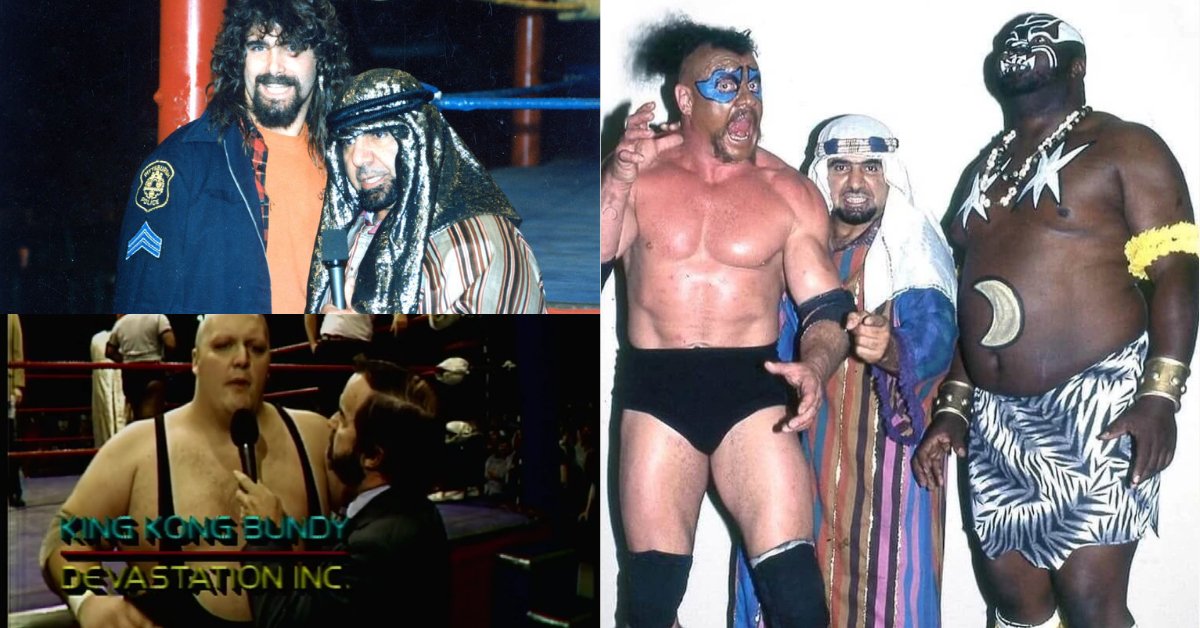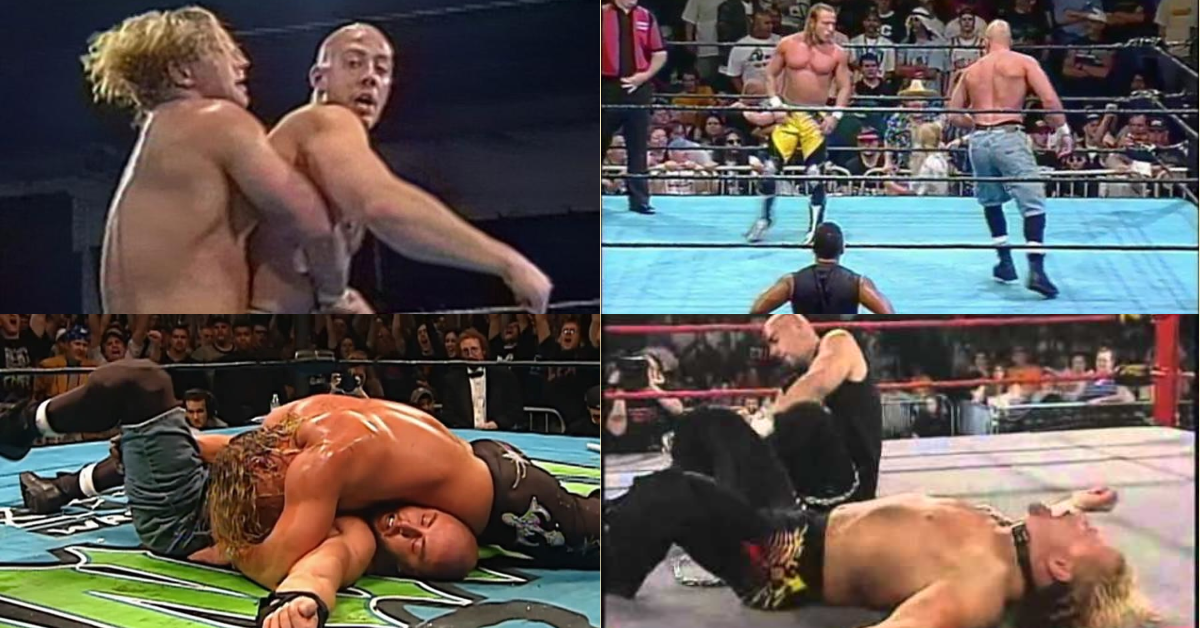Forgotten Stables: J-Tex Corporation
A good stable can be one of the best or worst things in professional wrestling. Some stables may be thrown together to try and give many wrestlers something to do or be built to help get one star over. It can also be something that blows up in the face of the booker or creative to put it over. For every stable like the Four Horsemen, New World Order or D-Generation X, there are tons of flops like the recent Retribution. But many are forgotten to time or simply weren’t around for many modern fans to know of. So with this feature, we will look back upon some of these Forgotten Stables, looking at who led them and passed through their ranks.
Two things usually come to mind when one thinks of World Championship Wrestling in 1989.
The first is the acclaimed (and rightly so) trilogy of matches between Ric Flair and Ricky Steamboat, trading the World Heavyweight Championship. At the culmination of this feud, Terry Funk would infamously turn heel and return to wrestling by attacking Flair following the final match with Steamboat (read more about that here).
What many will forget is that the backdrop to not only the feud between Funk and Flair but the other hottest feud of the year, pitting Sting against The Great Muta, was the building of a long-forgotten stable led by one of the most brilliant minds and managers in the history of wrestling, Gary Hart.
Today we are taking a look at The J-Tex Corporation.
In March of 1989, while Flair was still battling it out with Steamboat, manager Gary Hart had brought in The Great Muta, announcing him as the son of The Great Kabuki, who Hart had led to stardom years before. While he was announced as ‘The Great Muto’ on his debut, he would soon be redubbed as The Great Muta as he entered a feud with Sting for the WCW Television Championship.
At The Great American Bash, Hart led Muta to the ring for his Championship match with Sting, which ended controversially. First and foremost, one must remember that Muta was doing the moonsault as his finisher, something unseen at the time and an absolute high spot. In a memorable moment, Sting would be the first man to kick out of the moonsault. The match ended when Sting delivered a belly-to-back suplex for the win, but Sting and Muta had their shoulders off the mat. The Television Championship was vacated shortly after, but neither man was done for the night.
Following the main event World Championship match between Ric Flair and Terry Funk, The Great Muta came out to help in a beat down on Flair, clearly orchestrated by Hart. To the surprise of many at the time, the man who came to save Flair was his former rival Sting, laying the groundwork for what was to come for all four men.
Come September, The Great Muta defeated Sting for the Television Championship on a house show, but the real story around this time came at the Clash Of The Champions filled with controversy. Clash Of The Champions VIII was main evented by a tag match pitting Sting and Flair against The Great Muta and Dick Slater. Slater was a new member of the J-Tex Corporation, filling in for an injured Terry Funk. J-Tex dropped the bout by disqualification, but Terry Funk came out of nowhere and placed a plastic bag over Flair’s head, simulating asphyxiation on the Champion. This resulted in Turner Broadcasting coming down hard on WCW for fear of future lawsuits due to the image of a man being suffocated on live television.
However, all this was to build to the first Halloween Havoc PPV, which again saw Flair and Sting team up against Muta and Funk. This time, however, would be in the Thunderdome cage and officiated by the legendary Bruno Sammartino. Both teams had corner men who would have to throw in the towel. Of course, J-Tex was represented by Gary Hart, while Flair would look into his past and bring back fellow Horseman Ole Anderson to corner himself and Sting.
In somewhat of a cluster of a match, Flair and Sting prevailed once again, finally setting the stage for the big blow-off between Flair and Funk at the upcoming Clash Of The Champions. Of course, this was their iconic “I Quit” match, which is well-regarded as an absolute classic.
Around this time, things shifted away from J-Tex due to Funk wrapping up his feud with Flair and the backstage morale of The Great Muta. This was also when Arn Anderson returned to WCW, unfortunately without his tag partner Tully Blanchard due to a failed drug test. This led to reforming a new Four Horsemen consisting of Flair, Arn and Ole, with Sting even joining. This also led to the iconic moment of Sting being removed from the Horsemen to engage the build to his first World Championship.
Throughout the end of the run, Hart brought in a few other talents to try and give them the rub to mixed results, so let’s take a brief look at the whole of the J-Tex Corporation.
Gary Hart – One of the most legendary minds in the history of wrestling, Gary Hart was a territorial mastermind. Arguably the man who helped build World Class Championship Wrestling to a global force, especially in bringing in The Fabulous Freebirds to feud with the Von Erichs. Of course, that is only the tip of the iceberg, with Hart having been a wrestler in his earlier years before becoming one of the most underrated managers ever. Unfortunately, Hart passed away from a heart attack in 2008, with his autobiography being posthumously released the following year. It is now out of print, but if you can find a copy, I rate it as one of the top three greatest wrestling biographies ever written.
Terry Funk – Where does one even start in describing Terry Funk? A former NWA Champion from when that was the most important strap in the business, Funk continually evolved over the years, able to be a beloved babyface or a hated heel. A man who could mat wrestle with the best but also not afraid to step into a flaming ring deathmatch if needed. A man who could easily qualify for anybody’s Rushmore of wrestling, Funk had multiple retirements and finally wrestled his final match in 2017.
The Great Muta – Quite possibly the biggest Japanese star in North American notoriety, when The Great Muta debuted in WCW in 1989, he was unlike anything anyone had ever seen. A star from the very first moment, the real-life Keiji Muto wrestled from the mid-1980s until just this year (2023) when he wrestled his final matches after an extended retirement tour. After his retirement, Muta would be among a select few to be inducted into the WWE Hall Of Fame without actively working for the company.
Dick Slater – Dirty Dick Slater was a mainstay of southern wrestling throughout the 1970s and 1980s, working throughout the main territories of the time, including Georgia Championship Wrestling, Mid-South, Mid-Atlantic, and even venturing up north for the WWF. He also travelled across the pond to work in Japan for All Japan while holding numerous championships. Never able to truly break through to the main event scene, Slater was a solid hand for both lower and upper mid-card situations. Unfortunately, as is usually the case with stars of the era, Slater also had his issues outside the ring. Sadly, Slater passed away in 2018 from heart complications.
The Dragonmaster – Perhaps the most forgettable member of the stable, to the point that I had completely forgotten his existence during this time; the Dragonmaster was Kazuo Sakurada, another group member representing the J portion of J-Tex. While he had a rather extensive career consisting of runs in the NWA, WCW and Continental Wrestling, but perhaps most notably in Stampede Wrestling. The Stampede connection would run much deeper than his on-screen run, as he would become one of the head trainers in the vaunted Hart Dungeon alongside Mr. Hito, helping form a whole generation of hardened workers.
Buzz Sawyer – It’s not very often you will find a wrestler that almost nobody has anything to say about, but Buzz Sawyer almost certainly fits that bill. While he was one hell of a worker in the ring, by all accounts, Sawyer was a nightmare outside the ring, with frequent substance issues and a willingness to take advantage of his fellow wrestlers, including scamming many on training (including The Undertaker). Sawyer’s most memorable in-ring feud was his bloody feud with Tommy Rich leading to the “Last Battle of Atlanta” cage match. Sawyer passed away in 1992 from a drug overdose.
Of course, this is only a taste of The J-Tex Corporation. Make sure you visit the WWE Network (or Peacock if you’re in the US) and catch up on some of the great stuff you may have missed or never knew existed!



